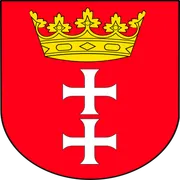The European Solidarity Centre (ESC) is a museum and cultural institution located in Gdańsk, Poland. Opened in 2014, it commemorates the history and legacy of Solidarity, the Polish trade union and social movement that played a crucial role in ending communist rule in Poland and Eastern Europe. The ESC’s striking architectural design resembles a ship’s hull, paying homage to Gdańsk’s shipyard heritage. The centre houses permanent and temporary exhibitions, a library, archives, and educational facilities. It serves as a hub for civic engagement, promoting democratic values, human rights, and social justice. The ESC also functions as a research center and meeting place for scholars, activists, and visitors interested in the history of peaceful resistance and social change in Europe.
Stepping into the European Solidarity Centre in Gdańsk, Poland, visitors are immediately transported back to a pivotal time in European history. The permanent exhibition, spread across seven spacious halls, offers a captivating journey through the birth and evolution of the Solidarity movement, which played a crucial role in toppling communism in Eastern Europe.
As you begin your tour, you’re greeted by an imposing shipyard gate – a powerful symbol of the workers’ struggles that ignited the Solidarity movement. This sets the tone for the immersive experience that follows, where history comes alive through a thoughtful blend of multimedia presentations, interactive displays, and carefully curated artifacts.
Moving through the exhibition, you’ll find yourself surrounded by the sights and sounds of 1970s Poland. The first hall paints a vivid picture of daily life under communist rule, with rationing cards, propaganda posters, and vintage household items transporting you back in time. It’s easy to imagine the frustrations and hardships faced by ordinary citizens during this era.
As you progress, the narrative shifts to the birth of the Solidarity movement. Here, you’ll encounter personal stories of brave individuals who dared to stand up against the oppressive regime. Handwritten notes, underground publications, and worn protest banners bring their struggles to life, making the history feel tangible and deeply personal.
One of the most striking features of the exhibition is its use of multimedia. Interactive touchscreens allow visitors to delve deeper into specific events or personalities, while large-scale projections create an immersive atmosphere. In one particularly moving installation, you can listen to recordings of protesters’ voices echoing through a recreated shipyard, giving you a sense of the passion and determination that fueled the movement.
The exhibition doesn’t shy away from the darker moments of Poland’s journey to democracy. The imposition of martial law in 1981 is portrayed with stark realism, complete with military vehicles and haunting images of empty streets. This section serves as a sobering reminder of the risks and sacrifices made by those who fought for freedom.
As you near the end of the exhibition, the mood lightens. The final halls celebrate the triumph of Solidarity and the fall of communism across Eastern Europe. Here, you’ll find iconic images of jubilant crowds tearing down the Berlin Wall and footage of the first partially free elections in Poland. It’s a powerful conclusion that leaves visitors with a sense of hope and the importance of standing up for one’s beliefs.
Throughout the exhibition, the use of personal stories and artifacts helps to humanize the historical events. You’ll see everyday items that took on new significance during the struggle – like a simple shipyard helmet transformed into a symbol of resistance. These touches make the history feel immediate and relatable, even to those who didn’t live through the events themselves.
One of the strengths of the permanent exhibition is its ability to appeal to visitors of all ages and backgrounds. For those with little prior knowledge of Polish history, the clear chronology and engaging presentations provide an excellent introduction. Meanwhile, those more familiar with the events will appreciate the depth of information available and the chance to view rare artifacts up close.
As you exit the exhibition, you’re likely to feel both moved and inspired. The European Solidarity Centre does an excellent job of not only preserving an important chapter of history but also drawing parallels to contemporary issues of freedom and democracy. It’s a reminder that the spirit of solidarity – the willingness to stand together in the face of adversity – remains as relevant today as it was during the heady days of Poland’s fight for freedom.The European Solidarity Centre serves as a vital institution commemorating the Solidarity movement and promoting democratic values in Poland and beyond. Located in Gdańsk, it functions as a museum, library, research center, and cultural hub. The Centre’s striking architectural design symbolizes the movement’s struggle and triumph. Through exhibitions, educational programs, and cultural events, it preserves the legacy of Solidarity while fostering civic engagement and social dialogue. The European Solidarity Centre plays a crucial role in connecting Poland’s past with its present, encouraging reflection on the importance of freedom, democracy, and human rights in contemporary society.

